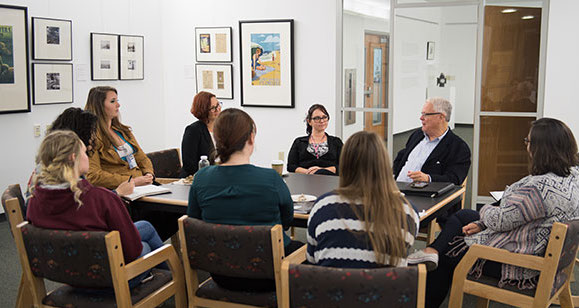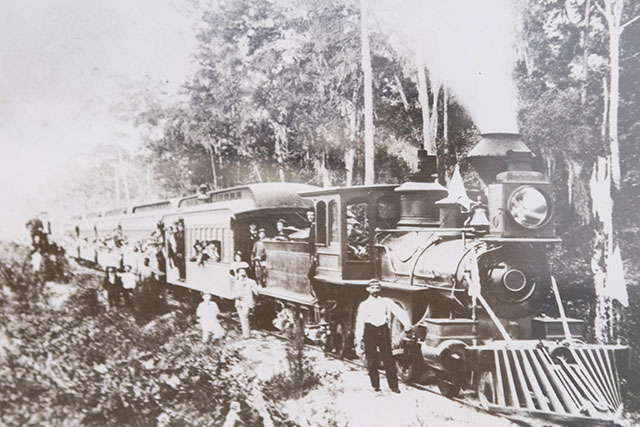
“Well, I’m going down to Florida
And get some sand in my shoes;
… I’ll ride that Orange Blossom Special
And lose these New York blues.”
Everglades musician Ervin Rouse was inspired to pen those lyrics to the bluegrass song that has become known as the “fiddle player’s national anthem” in 1938 when he saw the magnificent Orange Blossom Special in Jacksonville. From 1925 until the legendary winter-season-only train’s final run in 1953, “The Special” was the fashionable way for the sophisticated snowbird to travel from New York to the Sunshine State.
Nuggets of history such as that have inspired educator, historian and author Gregg Turner to take a love of railroads that started in childhood and make it a lifelong passion. Of the dozen books Turner has authored, most are about the history of transportation, and specifically, the prominent role of railroads in the country’s growth and development. One of those books, “Connecticut Railroads, an Illustrated History,” earned a U.S. Congressional Certificate of Merit.
As a Fort Myers resident, Turner has a special fondness for the trains that opened Florida to commerce and tourism, and one of his works on that topic, “A Journey into Florida Railroad History,” was a 2008 Florida Book Award bronze-medal winner for nonfiction. Other books Turner has authored more specific to Southwest Florida railroad history include “Railroads of Southwest Florida” and “A Milestone Celebration: The Seaboard Railway to Naples and Miami.”
That’s why it was a big deal in 2014 when Turner, former director and curator of the Railway & Locomotive Historical Society at Harvard Business School, donated much of his research scholarship and personal trove of Florida railroad memorabilia — the Turner Railroad Collection — to Florida Gulf Coast University’s Archives, Special Collections and Digital Initiatives on the third floor of the library. And it was a big deal when Turner visited the archives to spend time with the FGCU staff and students who curated “Florida Railroads: Gateway to Flowers, Oranges & Alligators,” the exhibit inspired by his generous donation, which was on display through early December.
Turner’s extensive collection of photos, documents and artifacts of Florida railroad history could “tell any number of stories,” said Melissa Minds VandeBurgt, head of the FGCU archives. “That’s why we wanted to narrow the exhibit down to when the railroads crossed the Caloosahatchee River.”

By the beginning of the 1900s, the railroads had made it as far south as Punta Gorda only because Col. Isaac Trabue, who owned most of what is now that city’s downtown area, was willing to give South Florida Railroad magnate Henry Plant free land for docks along the harbor and for a hotel. Fort Myers political and business leaders would not pay off Plant with such tributes, and it wasn’t until after his death in 1899 that the city, led largely by the efforts of cattle baron and politician Capt. Francis Hendry, was able to get rails laid “through the heart of the city to Monroe Street, where they could go right out to the Caloosahatchee River,” Turner said. “There, the trains could meet incoming steamboats and ship fresh fish and citrus from the region directly to New York.”
“That was the turning point in Fort Myers history,” Turner said. “It was a huge affair.”
It would not be until the 1920s that main rail lines finally were laid south of Fort Myers, when Barron Gift Collier got the Atlantic Coast Line Railroad to connect from Immokalee to a small transport line he operated out of Everglades City.
The personal story of Turner’s fascination with the rumble of the rails began, as the New London, Conn., native understands it, “when the only way to keep me quiet in my playpen was with a little wooden train.” When he was about 4, his family took him to the crossing of the Central Vermont Railway near their home. “The train came in with white smoke belching, bells clanging … you could smell the grease. I was terrified, but I was also elated. I knew then I would never give up this passion.”
Now, the fruits of that passion are in the possession of FGCU, thanks to Turner reaching out to VandeBurgt four years ago and being incredibly impressed with what the university archivist had planned for her then-new department.
“He interviewed me as though we were dating,” VandeBurgt joked. “We had multiple conversations about what I wanted to do, what I hoped to build, what kind of scholarship I wanted to promote. We are very focused on collecting not necessarily the pieces that bring in the most money, but those that serve our mission to collect Southwest Florida history, which is unique in itself because the university is so new. We are a teaching institution, so my job is to synthesize information so we can not only educate our students but the entire community.”
The archives’ doors are generally open to the public 9 a.m. to 5 p.m. weekdays, and 24/7 online. There, among the department’s many collections, you can enjoy the discoveries made by Gregg Turner, who has been working on the history of the railroad for many a live long day.